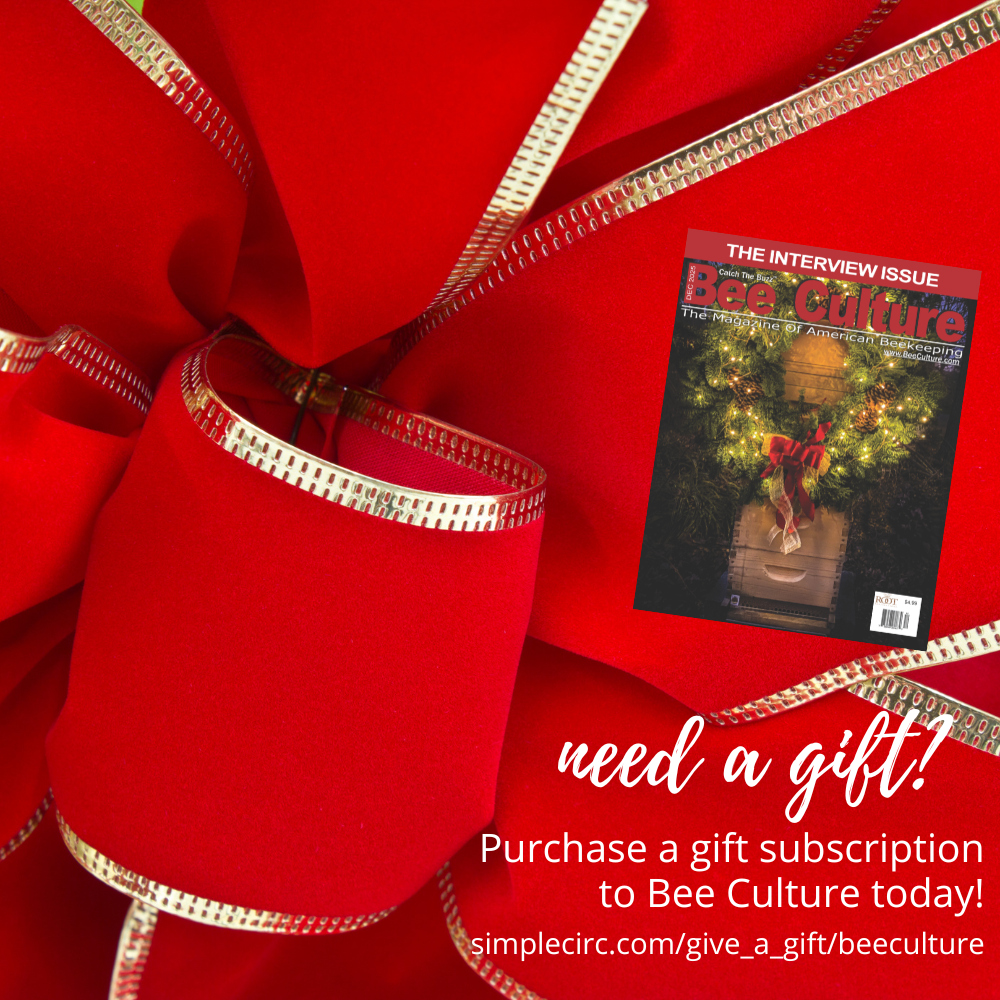Genetic Diversification and Tracking Results
Becky Masterman & Bridget Mendel
So you’re a new beekeeper and need to purchase a new queen (Who squashed the old one? Definitely not you). You are presented with various choices: you could get an Italian or Carniolan, a Saskatraz or a Buckfast queen. We get a lot of questions from new beekeepers about what kind of queens to invest in, or where to purchase those queens. And the answer is complicated, because it’s beekeeping.
Genetics matter, but subtly. It’s like playing the guitar. Plenty of guitar nerds will recommend bidding on Jerry Garcia’s “Tiger” guitar at auction, but if you haven’t mastered your basic chords, the guitar you play isn’t going to matter much. Beekeeping is a total collaboration between bees and beekeeper, and the nuances of different stock matters more as a beekeepers’ experience and skills grow.
When we are talking about bee stocks, we mean genetics. There are different subspecies or races of honey bees, like Italian, Carniolan, and Caucasian (Delaplane, 2007). There are also genetic lines or stocks of bees that have been bred from any subspecies for specific behavioral traits like increased honey production, gentleness, resistance to diseases and pests. Some researchers are digging into the DNA of some of these lines to determine the genetic diversity of these stocks and identify important traits (Saelao et al., 2020). Others select colonies that display particular behavioral traits that confer disease or mite resistance, like hygienic behavior (like the MN Hygienic bees that were bred by Dr. Marla Spivak and Gary Reuter at the University of Minnesota Bee Lab in the 1990’s) and Varroa Sensitive Hygiene (VSH; bred for Varroa resistance by the USDA-ARS Bee Breeding lab in Baton Rouge, Louisiana) or grooming behavior (“Ankle biters”, bred for Varroa resistance at Purdue University). The goal of these bred lines of bees is to decrease your need to use chemicals in your hives (see links below for more information).
Before you set out to find the one perfect bee stock for your area and operation, we suggest you don’t search for a single perfect bee line for your apiary. Your apiary isn’t static, so depending on the season’s weather, nectar flows, or disease pressures, the perfect bee for your apiary is subject to change. Stocking your apiary with multiple queen sources spreads your risks among different genetic traits. For an easy-to-read chart of some of the different bee stocks available, check out the article by Dr. David Tarpy referenced at the end of this article.
While you can’t have the perfect bee, we do suggest that you research traits and have a list of them that you want checked off when selecting queen stock. Definitely put disease and pest resistance at the top of your list; it’s a crazy world out there. We are excited about Spivak’s new breeding program that reinvests in natural disease and pest resistance by focusing on traits like propolis collection, low mite population growth over the season, and hygienic behavior. Breeding programs take time, so you will have to wait a few years to add these bees to your apiary.
What else should you consider when selecting queen stock? We love the way Italian bees brood up in cold Minnesota springs, despite a serious lack of flowers. Italian bees are kind of like Minnesotans who will immediately head for a rooftop bar in a tank top on that one day the temps graze 50 degrees at the highest, even though there’s snow in the forecast. They. Are. Ready.
But we also love the more conservative Carniolan bees who tend to be keyed into our Minnesota’s erratic spring weather: they will shut down brood production if the weather turns cold, and even cannibalize their larvae waiting for warmer days. In fact, Carniolans can look queenless when they go from brood to broodless, but really they are just being efficient with resource management. It is okay to hedge your bets with different stocks of bees that perform differently, allowing for some success whether the weather.
Sourcing Queens
There are many ways to source queen bees. Understanding these options will help you put together a solid, well-performing bee portfolio. Professional queen breeders use inseminated queens for their grafting operations. This process controls both the genetic stock of the mothers (queens) and fathers (drones). Inseminated queens are expensive and are ideal for queen breeders and researchers who want the most control over their bee genes.
Some queen breeders sell both queen cells and mated queens. Commercial beekeepers who produce queens also maintain multiple gene stocks in their operations. Another advantage to the professional queen producer is that they are able to flood mating areas with drones in order to control the genetic contributions of both the queens and the drones even without using artificial insemination.

Commercial queen breeders rely on healthy, well fed and populous colonies to rear grafted queens. Daniel Whitney photo
DIY beekeepers might just want to raise their own queens. Whether you learn to graft your own queens or incorporate walk away splits into your operation, there are some advantages and disadvantages. You will save money and if you are letting the bees raise their own queens via walk away splits, you will be incorporating a nice brood break which can help with Varroa management. The disadvantages include your inability to control the genetic contributions of area drones, which depending on your apiary locations can be quite limited. You also need to have a larger apiary to solve queenlessness should your rearing or mating efforts fail. One way to combat at least some of these issues is to create a bee network like the one organized by Dr. Meghan Milbrath of Sand Hill Bees and Michigan State University. Milbrath’s Northern Bee Network (http://northernbeenetwork.org/) is centered in Michigan, but there are members from other Northern states. One of the goals of this network is to make local queens and bees available for sale or exchange. It’s a great way to support local queen breeders while incorporating locally-adapted genetics into your operation.
Tracking Stock
Excellent record keeping is the key to tracking the queen stock that you use in your apiary, allowing you to learn what works and doesn’t work for you. Painting queens is helpful [include national colors below, or you can invest in a diverse set of bricks and rocks that allow you to track multiple traits (highly NOT recommended) or you can join the Bee Informed Partnership’s Sentinel Apiary Program and let them get you started with some accountability. There are also great tracking programs like HiveTracks (www.hivetracks.com), that will help you keep track of how different queen stocks fare in your apiary. Bricks and rocks on top of your colonies is not a good way to track traits; writing things down or logging colony information into an app is the only way to really gather reliable information.
The goal of tracking is to understand how different bees perform under the different environmental conditions (like the behavioral differences of Italian and Carniolan stock differ in a cold spring); to note any supercedures or swarms (so you know what you are tracking), and closely monitor diseases and pests. Tracking your queens from the beekeeping get-go sets you up for a future of geeking out on stocks and genetics (https://carolinahoneybees.com/mark-your-queen-bee/). And yes, naming individual queens after Game of Thrones characters is appropriate for most beekeepers (see list of queens past and present below https://gameofthrones.fandom.com/wiki/Category:Queens).
References
Delaplane, Keith S. (2007) First Lessons in Beekeeping reproduced with permission by the publishers Dadant & Sons, Hamilton, Illinois, USA, Copyright https://beehealth.extension.org/subspecies-the-place-of-honey-bees-in-the-world/
Tarpy, David (2016) https://content.ces.ncsu.edu/the-different-types-of-honey-bees Saelao, Perot; Simone-Finstrom, Michael; Avalos, Arian; Bilodeau, Lelania; Danka, Robert; de Guzman, Lilia ; Rinkevich, Frank; Tokarz, Philip (2020) LONDON: BMC BMC genomics. Genome-wide patterns of differentiation within and among US commercial honey bee stocks Vol.21 (1), p.704-704
Minnesota Hygienic Bees: https://www.beelab.umn.edu/https%3A/www.beelab.umn.edu/honey-bees/publications
Varroa Sensitive Hygiene Bees: https://beehealth.extension.org/varroa-sensitive-hygiene-and-mite-reproduction/
Purdue Ankle Biters: https://extension.entm.purdue.edu/beehive/our-breeding-program/
Acknowledgement
The authors would like to thank Dr. Marla Spivak for helpful edits and suggestions. We are grateful to Daniel Whitney and John Miller for their queen breeding insights.
 Authors
Authors
Becky Masterman led the UMN Bee Squad from 2013-2019 and currently alternates between acting as an advisor and worker bee for the program. Bridget Mendel joined the Bee Squad in 2013 and has led the program since 2020. Photos of Becky (left) and Bridget (right) each demonstrating why meticulous notetaking is the best way to track your colonies. Both of these hives need more supers.











